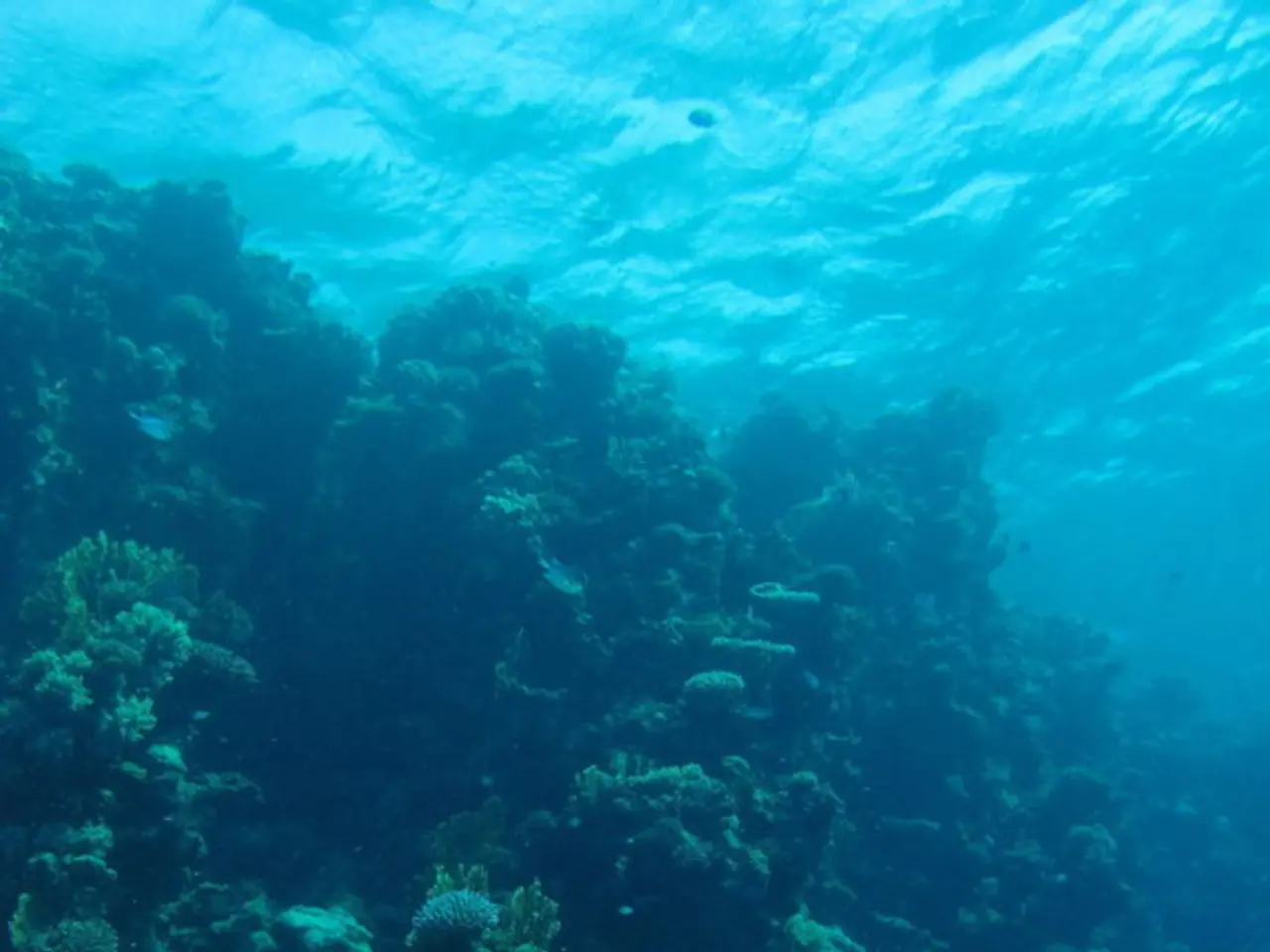Massive underwater expanse challenges conventional understanding of our planet's geography
In the vast expanse of the Pacific Ocean, east of Papua New Guinea, scientists have made a groundbreaking discovery. They've unearthed a colossal hydrogen-emitting field named Kunlun, spanning approximately 1.2 square kilometers at a depth of around 1,500 meters.
This field, located northeast of Papua New Guinea, is unique as it does not resemble high-temperature "black smokers" commonly found in other hydrothermal fields. Instead, it emits hydrogen-rich liquids at temperatures below 40°C.
The Kunlun field is home to a diverse ecosystem, inhabited by shrimp, hermit crabs, and tubeworms. These life forms, surprisingly, are adapted to the field's unique conditions, thriving in the hydrogen-rich environment.
The discovery of the Kunlun field has the potential to challenge existing Earth theories. Its size, which is larger than the "Lost City" in the Atlantic, and its unique characteristics set it apart from any known hydrothermal field.
Moreover, the Kunlun field accounts for up to 8% of all abiotic hydrogen on Earth, opening up significant opportunities for unlimited hydrogen extraction. This could potentially revolutionise energy production, given hydrogen's role as a clean and renewable energy source.
The scientific community is abuzz with excitement about this discovery. Science XXI has reported the Kunlun field as a potential game-changer, highlighting its potential to reshape our understanding of Earth's hydrothermal processes and life forms.
As research continues, we can only anticipate more revelations from this extraordinary find. The Kunlun field is indeed a testament to the wonders that still lie hidden beneath the ocean's surface, waiting to be discovered.








